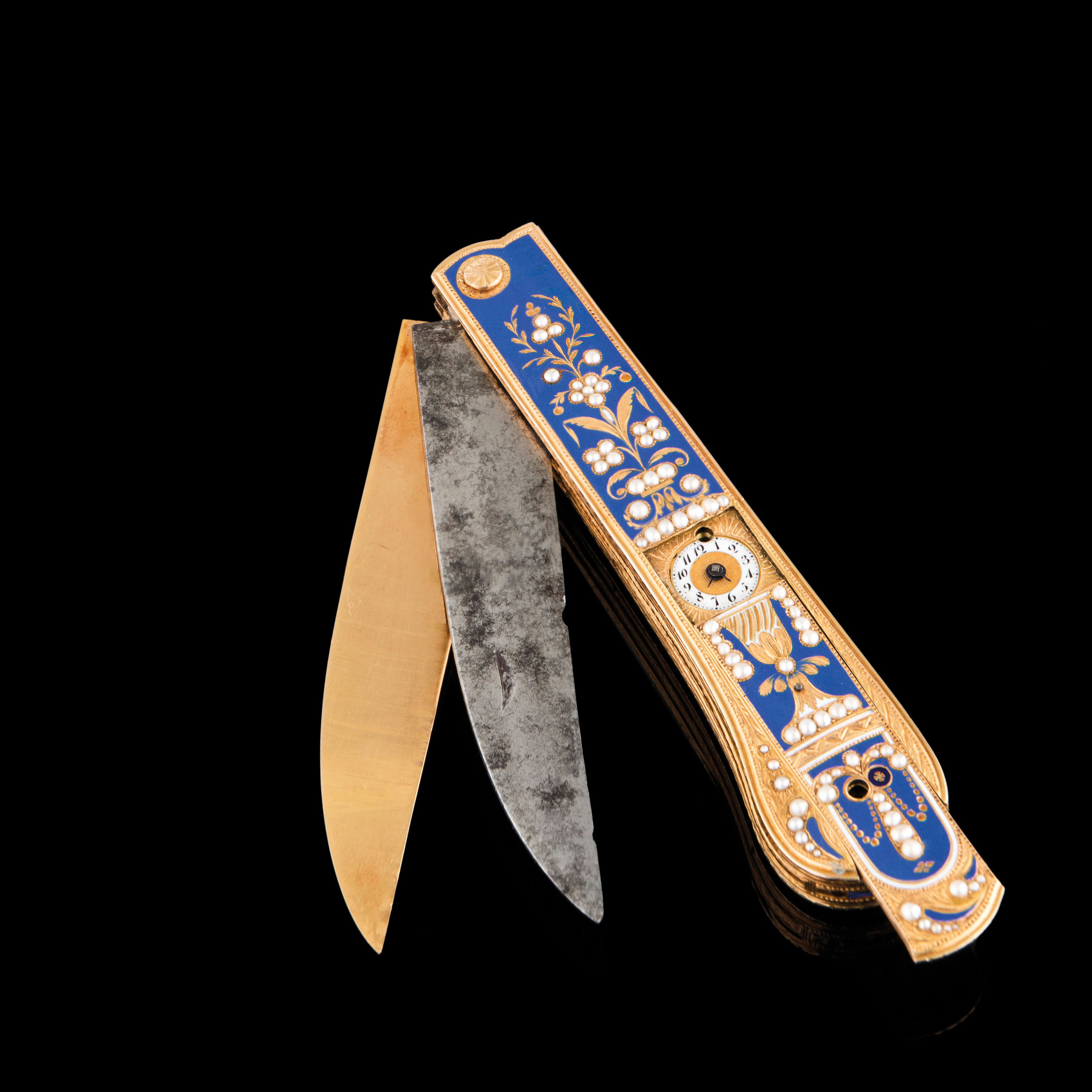Musical fruit knives have always been regarded as particularly rare and precious technical marvels, destined for the collections of refined and exclusive connoisseurs, who were delighted by an object that superbly combined complex technological evolution with aesthetic beauty.
In the auction of Pocket Watches and Table Clocks on 12 December 2022, a rare musical fruit knife with watch, in gold, enamel and pearls, made for the Chinese market, probably Piguet & Meylan, around 1805-1815 (lot 173, estimate €20,000 – €30,000), will be hesitated.
Philippe-Samuel Meylan – one of the most important Swiss watchmakers of the early 19th century – was known for everything related to precision engineering: his watches were one of a kind and his automata were on a par with anything produced by the great Jaquet Droz.
In 1811, together with Isaac Piguet, he founded Piguet & Meylan in Geneva, which was, until 1828 when the two partners parted company, one of the largest firms in the city. In Geneva, Piguet & Meylan specialised in musical watches and haut de gamme novelties incorporating tiny automata, decorated in the typical Geneva style. The two partners were masters at this and produced so-called ‘Chinese’ watches, i.e. mostly gold models, enamelled and set with pearls, destined for the Chinese market.
The enchanting example in the catalogue features a double blade, making it one of only four known examples in the world with these characteristics produced for the Chinese market. Legend has it that the gold blade was intended for cutting fruit, while the steel blade for cutting flowers.
The handle of this extraordinary artefact is made of yellow gold, finely decorated with taille d’épargne enamels and small pearls on a blue background. The reverse is similarly decorated, centred by a pink enamel panel, with a still life depicting a basket full of fruit and fluttering lapwings. The gold sides are decorated with engraved chevrons, two folding blades, one stamped gold and one steel. Removing the lower panel from the main side reveals the small clock face for reading the hours. The pocketknife is equipped with a six-tooth comb-shaped carillon hidden inside the handle that can be operated with a small button on the side. The main movement of the watch has a cylinder escapement. The knife-watch was completely restored before being put up for auction by master watchmaker Gabriele Ribolini.
Alfred Chapuis, in his book La Montre Chinoise of 1983, illustrates in detail the uniqueness of this knife-watch with carillon, and describes the workings of the cylinder movement, which was designed and made by Antoine Favre in 1796, which made it possible to incorporate miniature carillons into everyday objects, using the body of the object as a resonance chamber.
-
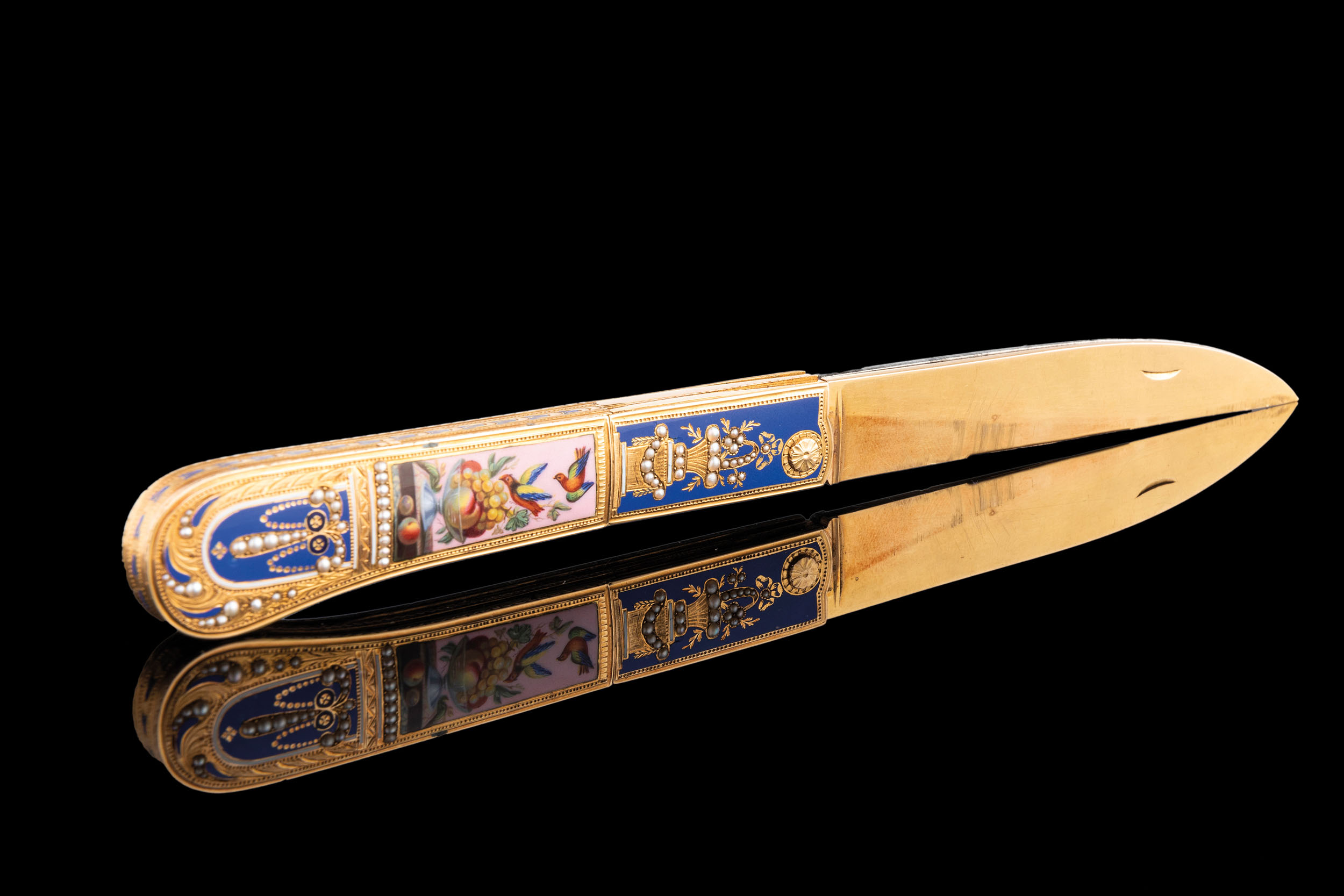
 173 | Rarissimo ed eccezionale coltello da frutta musicale con orologio, in oro, smalti e perle, realizzato per il mercato cinese, probabilmente Piguet e Meylan, 1805-1815 circa. Stima € 20.000 - 30.000
173 | Rarissimo ed eccezionale coltello da frutta musicale con orologio, in oro, smalti e perle, realizzato per il mercato cinese, probabilmente Piguet e Meylan, 1805-1815 circa. Stima € 20.000 - 30.000
-
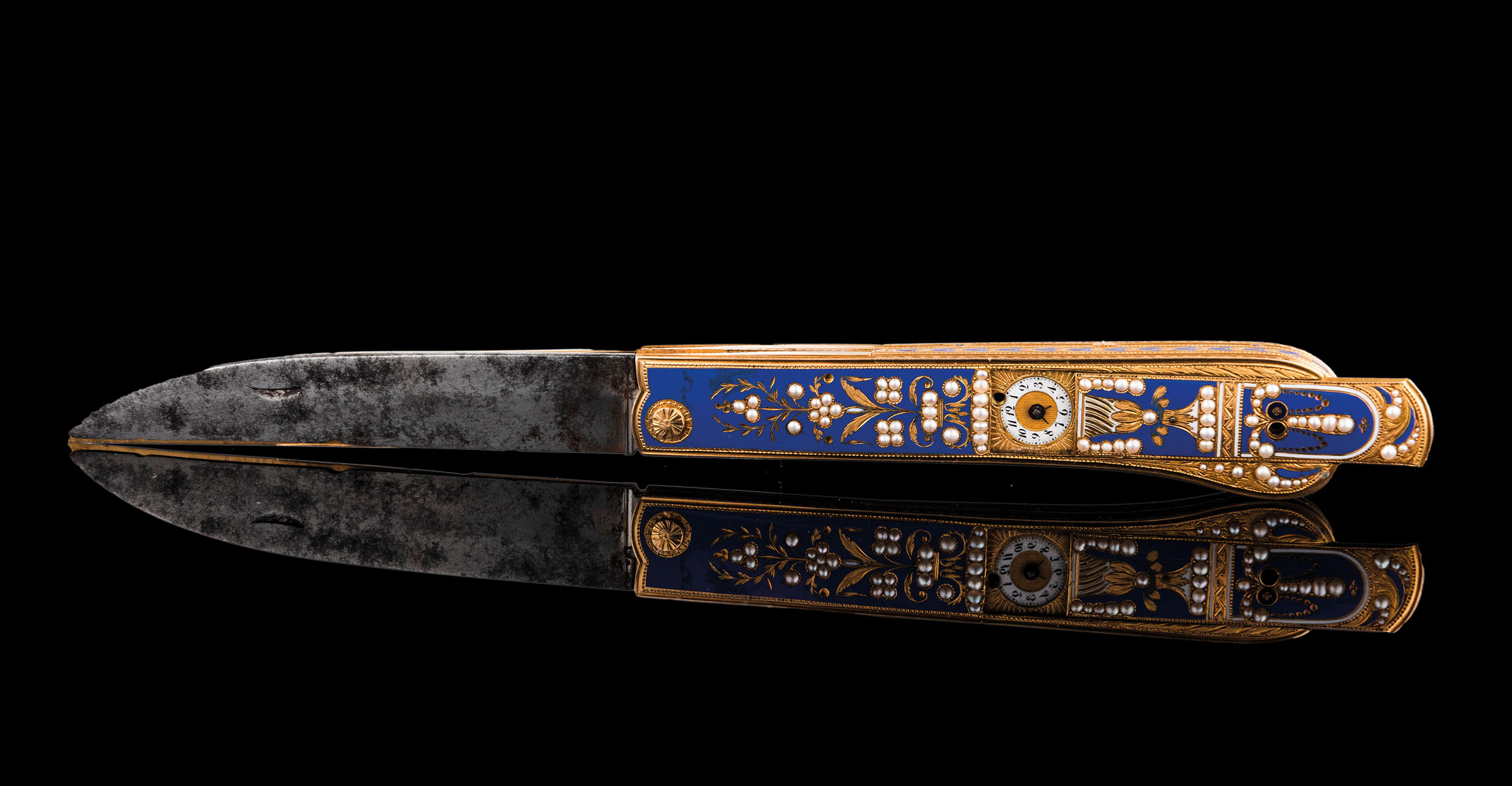
 173 | Rarissimo ed eccezionale coltello da frutta musicale con orologio, in oro, smalti e perle, realizzato per il mercato cinese, probabilmente Piguet e Meylan, 1805-1815 circa. Stima € 20.000 - 30.000
173 | Rarissimo ed eccezionale coltello da frutta musicale con orologio, in oro, smalti e perle, realizzato per il mercato cinese, probabilmente Piguet e Meylan, 1805-1815 circa. Stima € 20.000 - 30.000
-

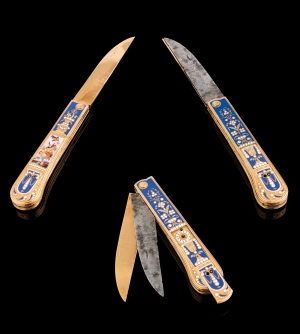 173 | Rarissimo ed eccezionale coltello da frutta musicale con orologio, in oro, smalti e perle, realizzato per il mercato cinese, probabilmente Piguet e Meylan, 1805-1815 circa. Stima € 20.000 - 30.000
173 | Rarissimo ed eccezionale coltello da frutta musicale con orologio, in oro, smalti e perle, realizzato per il mercato cinese, probabilmente Piguet e Meylan, 1805-1815 circa. Stima € 20.000 - 30.000
-

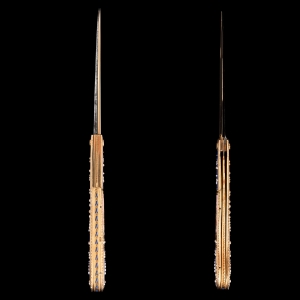 173 | Rarissimo ed eccezionale coltello da frutta musicale con orologio, in oro, smalti e perle, realizzato per il mercato cinese, probabilmente Piguet e Meylan, 1805-1815 circa. Stima € 20.000 - 30.000
173 | Rarissimo ed eccezionale coltello da frutta musicale con orologio, in oro, smalti e perle, realizzato per il mercato cinese, probabilmente Piguet e Meylan, 1805-1815 circa. Stima € 20.000 - 30.000
-

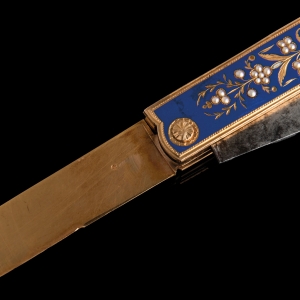 173 | Rarissimo ed eccezionale coltello da frutta musicale con orologio, in oro, smalti e perle, realizzato per il mercato cinese, probabilmente Piguet e Meylan, 1805-1815 circa. Stima € 20.000 - 30.000
173 | Rarissimo ed eccezionale coltello da frutta musicale con orologio, in oro, smalti e perle, realizzato per il mercato cinese, probabilmente Piguet e Meylan, 1805-1815 circa. Stima € 20.000 - 30.000
-
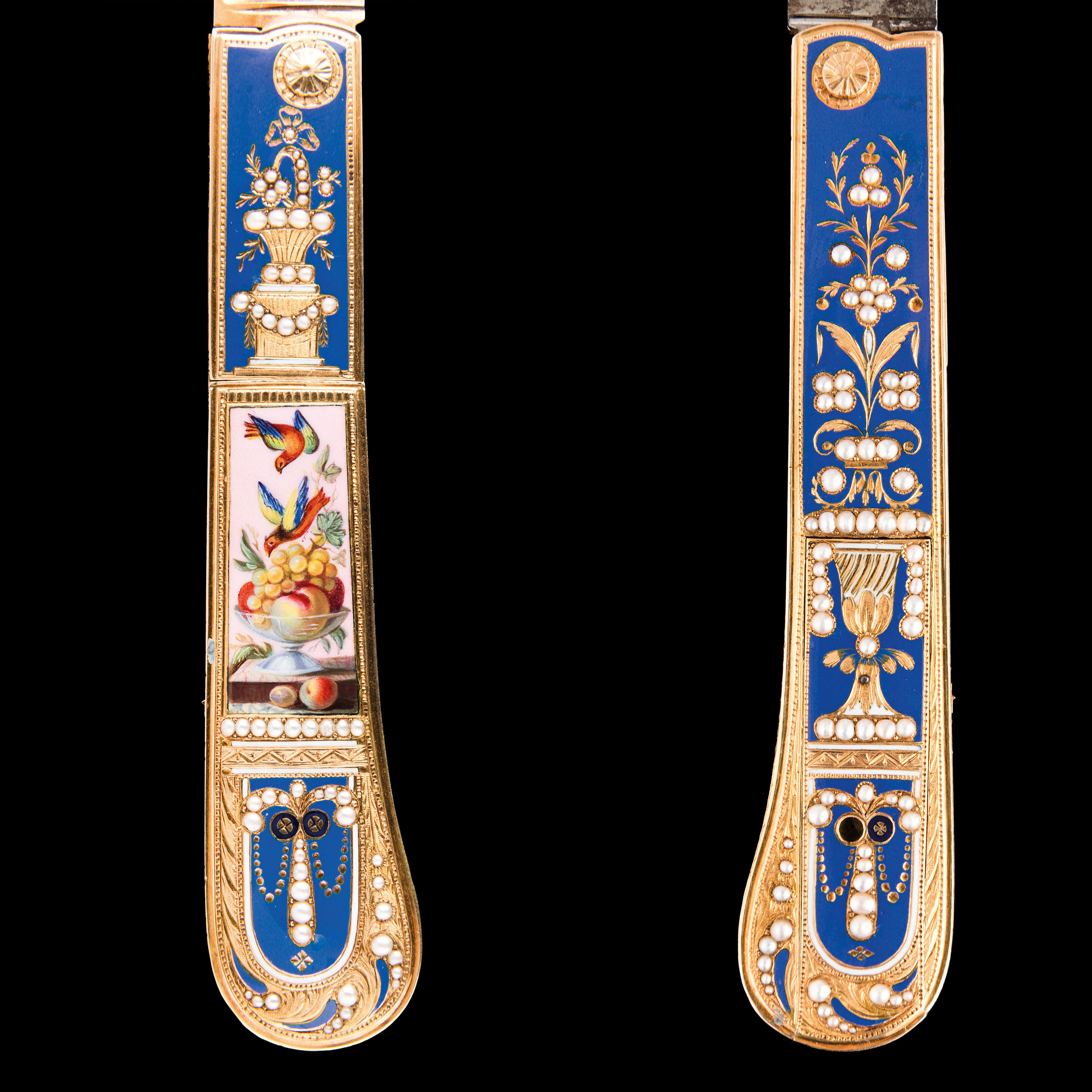
 173 | Rarissimo ed eccezionale coltello da frutta musicale con orologio, in oro, smalti e perle, realizzato per il mercato cinese, probabilmente Piguet e Meylan, 1805-1815 circa. Stima € 20.000 - 30.000
173 | Rarissimo ed eccezionale coltello da frutta musicale con orologio, in oro, smalti e perle, realizzato per il mercato cinese, probabilmente Piguet e Meylan, 1805-1815 circa. Stima € 20.000 - 30.000
-
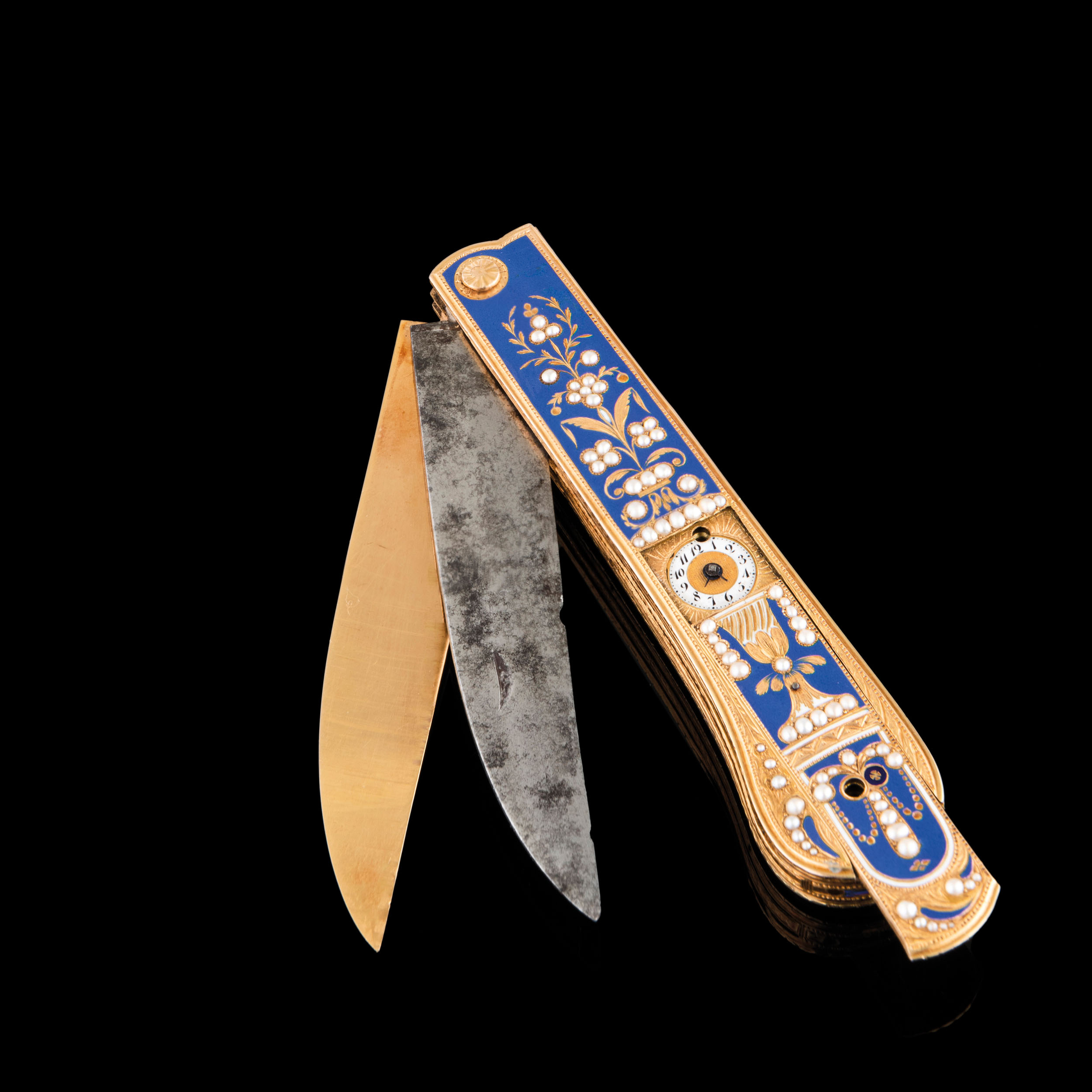
 173 | Rarissimo ed eccezionale coltello da frutta musicale con orologio, in oro, smalti e perle, realizzato per il mercato cinese, probabilmente Piguet e Meylan, 1805-1815 circa. Stima € 20.000 - 30.000
173 | Rarissimo ed eccezionale coltello da frutta musicale con orologio, in oro, smalti e perle, realizzato per il mercato cinese, probabilmente Piguet e Meylan, 1805-1815 circa. Stima € 20.000 - 30.000
-

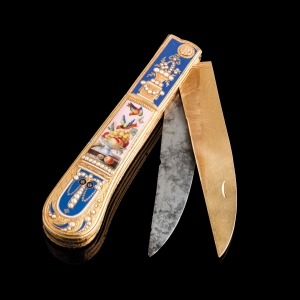 173 | Rarissimo ed eccezionale coltello da frutta musicale con orologio, in oro, smalti e perle, realizzato per il mercato cinese, probabilmente Piguet e Meylan, 1805-1815 circa. Stima € 20.000 - 30.000
173 | Rarissimo ed eccezionale coltello da frutta musicale con orologio, in oro, smalti e perle, realizzato per il mercato cinese, probabilmente Piguet e Meylan, 1805-1815 circa. Stima € 20.000 - 30.000
-
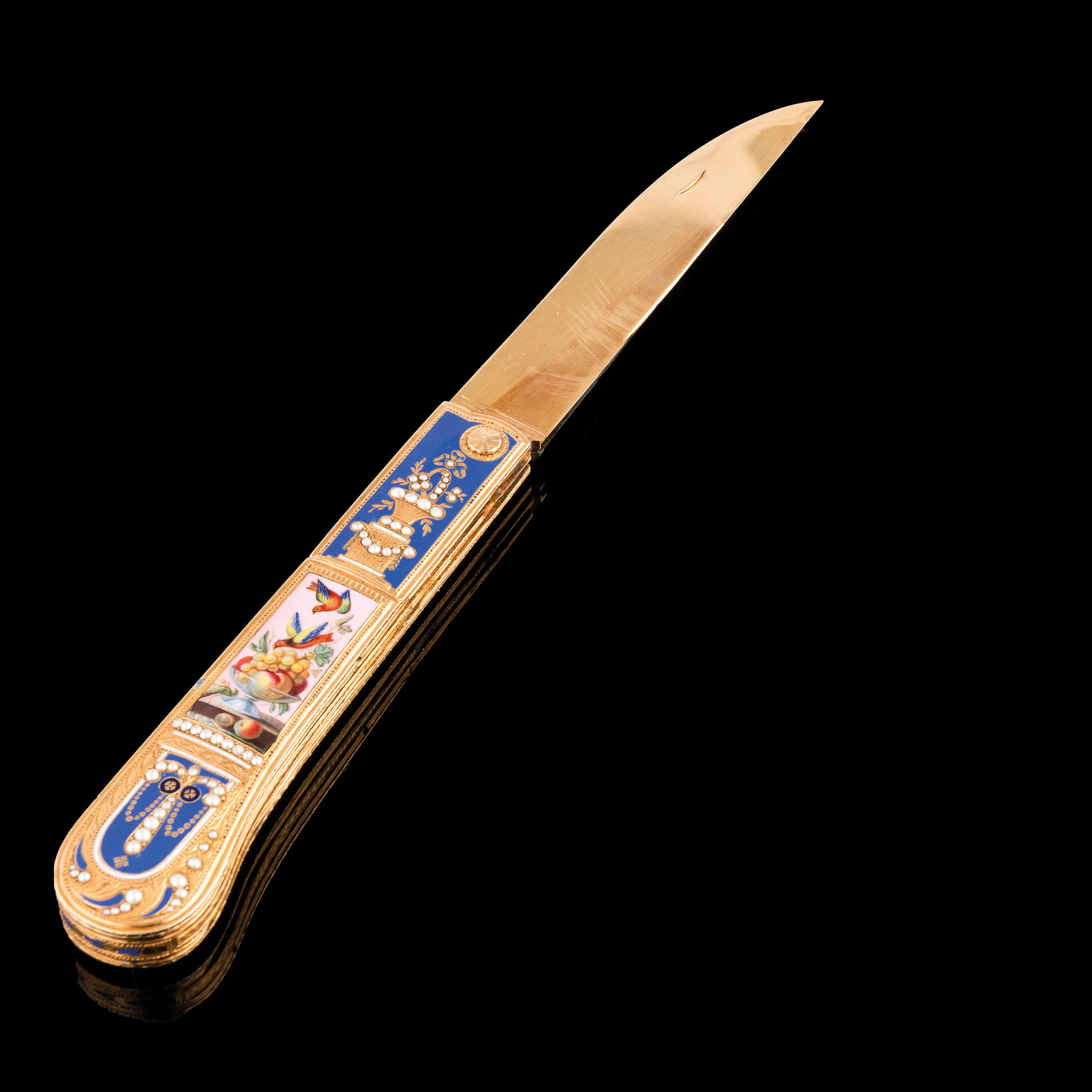
 173 | Rarissimo ed eccezionale coltello da frutta musicale con orologio, in oro, smalti e perle, realizzato per il mercato cinese, probabilmente Piguet e Meylan, 1805-1815 circa. Stima € 20.000 - 30.000
173 | Rarissimo ed eccezionale coltello da frutta musicale con orologio, in oro, smalti e perle, realizzato per il mercato cinese, probabilmente Piguet e Meylan, 1805-1815 circa. Stima € 20.000 - 30.000
-
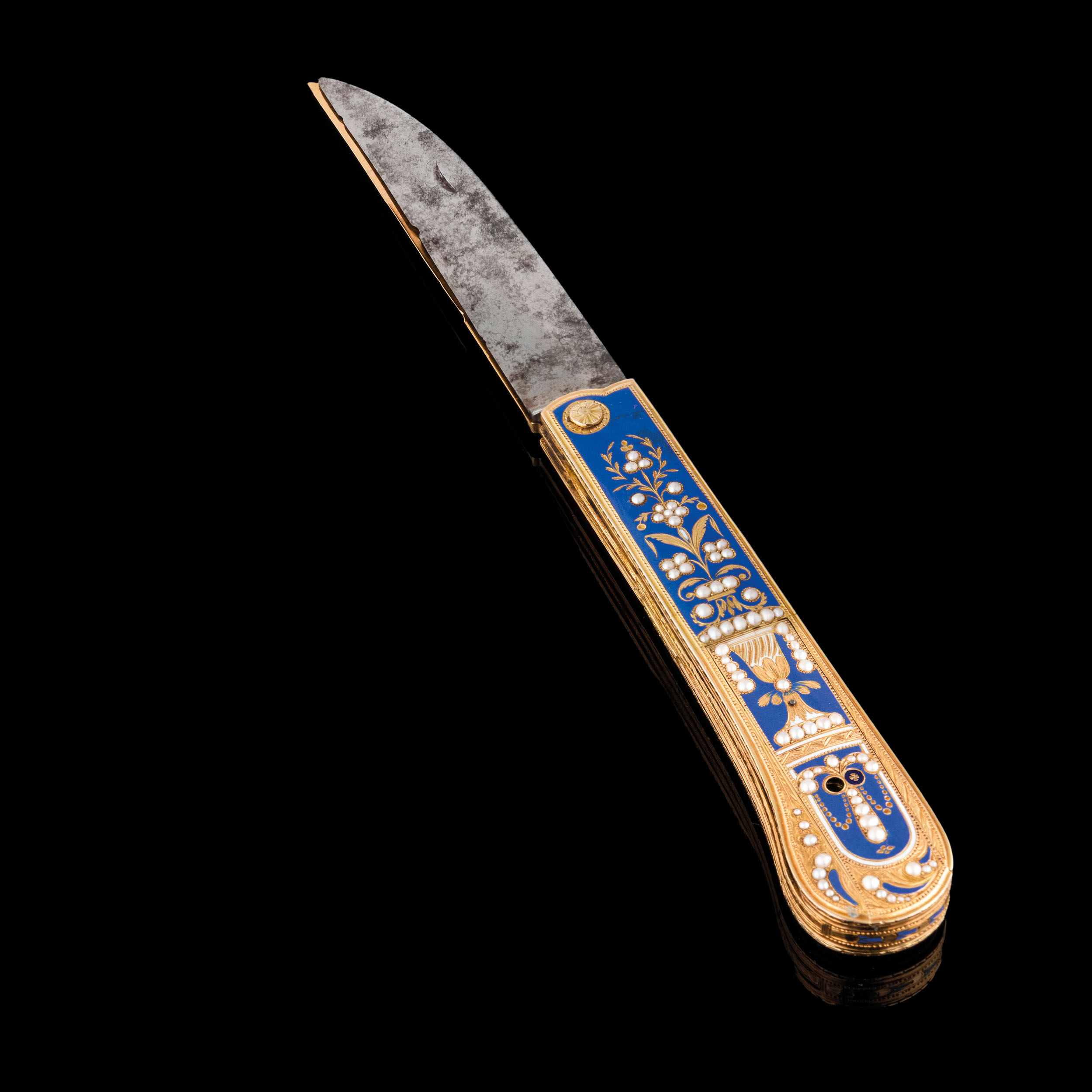
 173 | Rarissimo ed eccezionale coltello da frutta musicale con orologio, in oro, smalti e perle, realizzato per il mercato cinese, probabilmente Piguet e Meylan, 1805-1815 circa. Stima € 20.000 - 30.000
173 | Rarissimo ed eccezionale coltello da frutta musicale con orologio, in oro, smalti e perle, realizzato per il mercato cinese, probabilmente Piguet e Meylan, 1805-1815 circa. Stima € 20.000 - 30.000
-

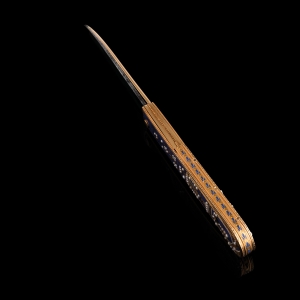 173 | Rarissimo ed eccezionale coltello da frutta musicale con orologio, in oro, smalti e perle, realizzato per il mercato cinese, probabilmente Piguet e Meylan, 1805-1815 circa. Stima € 20.000 - 30.000
173 | Rarissimo ed eccezionale coltello da frutta musicale con orologio, in oro, smalti e perle, realizzato per il mercato cinese, probabilmente Piguet e Meylan, 1805-1815 circa. Stima € 20.000 - 30.000
-

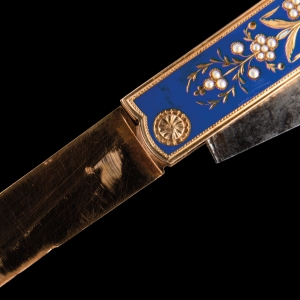 173 | Rarissimo ed eccezionale coltello da frutta musicale con orologio, in oro, smalti e perle, realizzato per il mercato cinese, probabilmente Piguet e Meylan, 1805-1815 circa. Stima € 20.000 - 30.000
173 | Rarissimo ed eccezionale coltello da frutta musicale con orologio, in oro, smalti e perle, realizzato per il mercato cinese, probabilmente Piguet e Meylan, 1805-1815 circa. Stima € 20.000 - 30.000
-
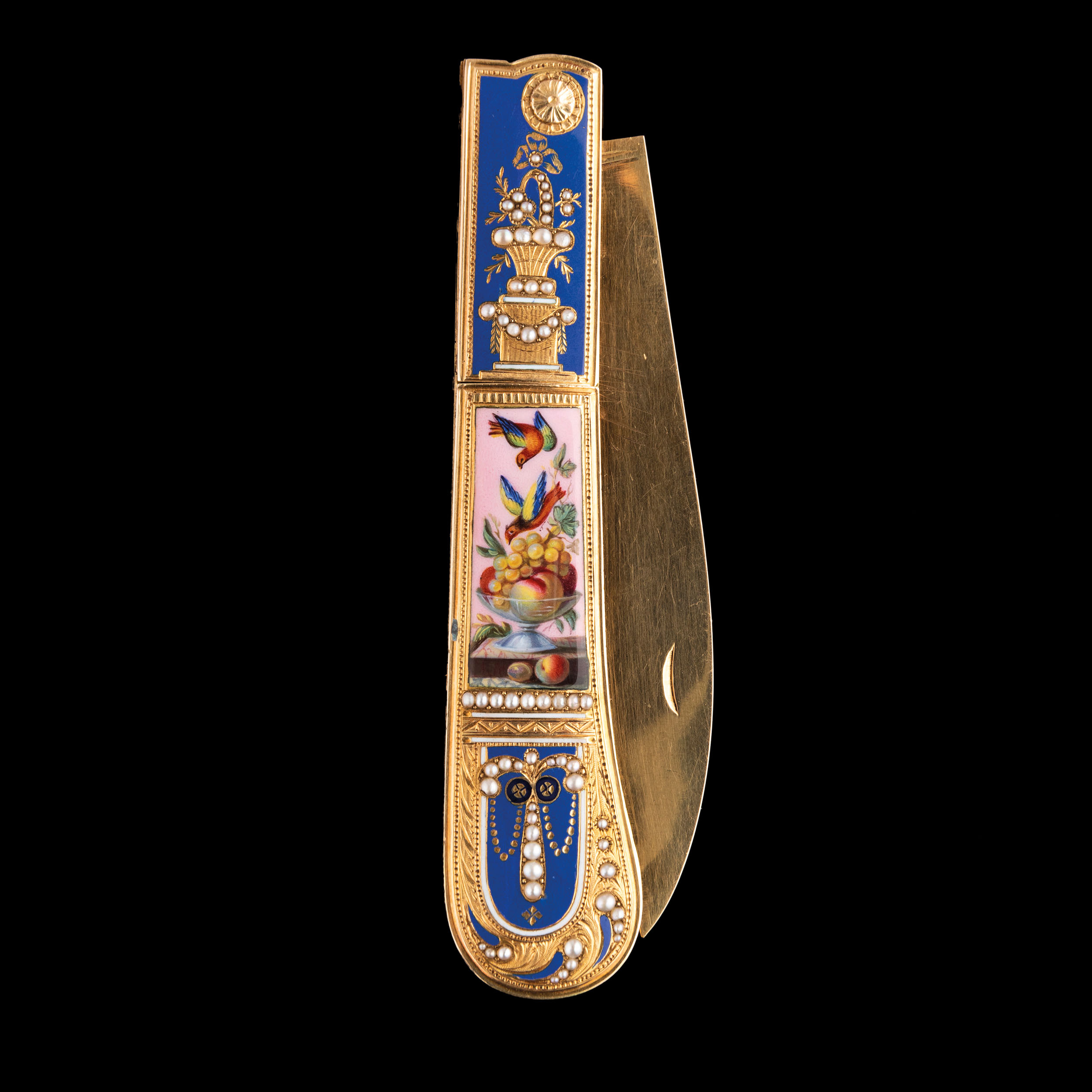
 173 | Rarissimo ed eccezionale coltello da frutta musicale con orologio, in oro, smalti e perle, realizzato per il mercato cinese, probabilmente Piguet e Meylan, 1805-1815 circa. Stima € 20.000 - 30.000
173 | Rarissimo ed eccezionale coltello da frutta musicale con orologio, in oro, smalti e perle, realizzato per il mercato cinese, probabilmente Piguet e Meylan, 1805-1815 circa. Stima € 20.000 - 30.000
-
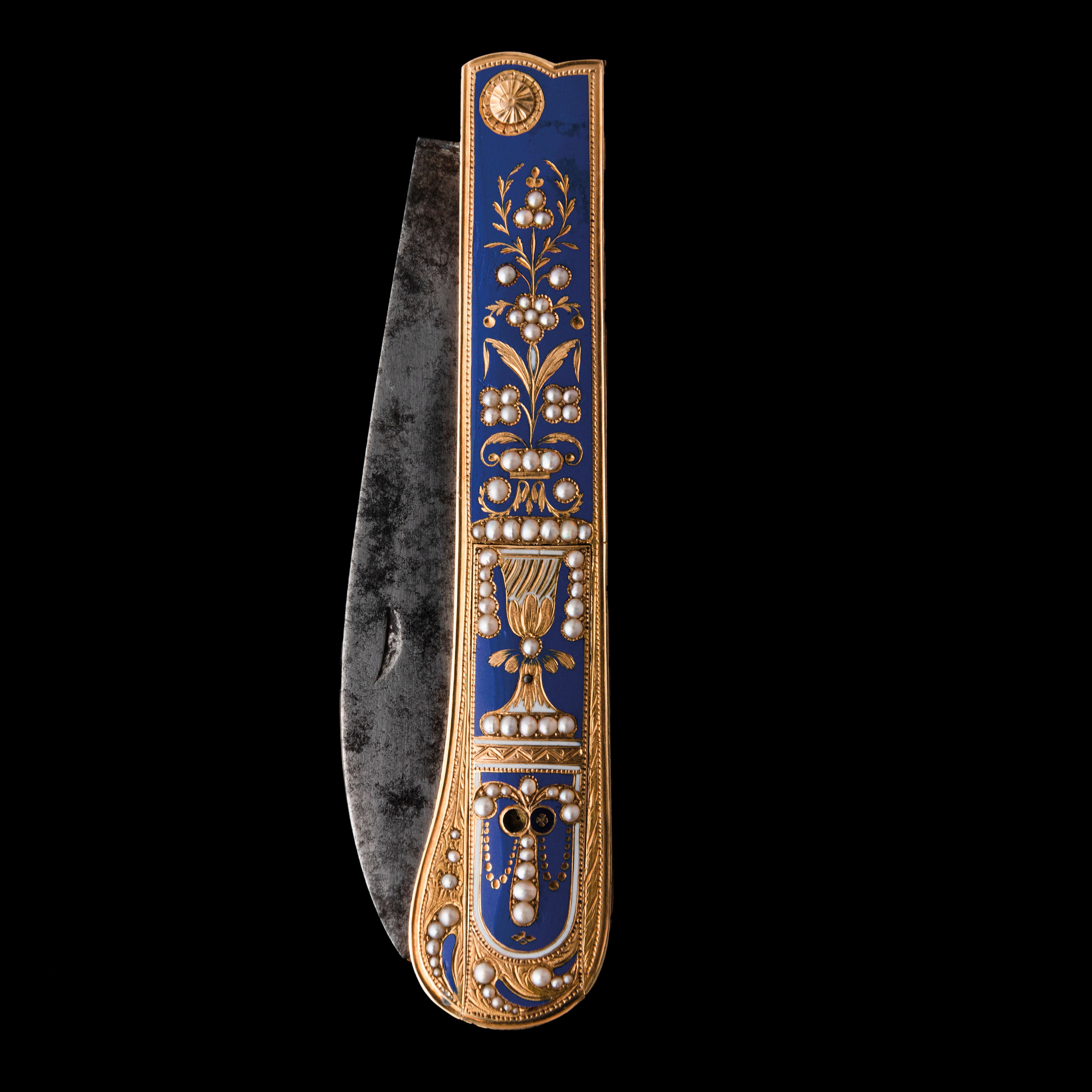
 173 | Rarissimo ed eccezionale coltello da frutta musicale con orologio, in oro, smalti e perle, realizzato per il mercato cinese, probabilmente Piguet e Meylan, 1805-1815 circa. Stima € 20.000 - 30.000
173 | Rarissimo ed eccezionale coltello da frutta musicale con orologio, in oro, smalti e perle, realizzato per il mercato cinese, probabilmente Piguet e Meylan, 1805-1815 circa. Stima € 20.000 - 30.000
-

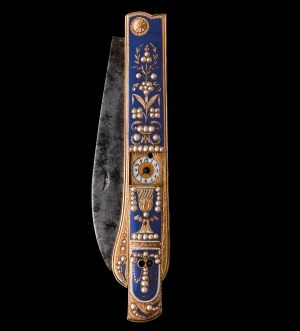 173 | Rarissimo ed eccezionale coltello da frutta musicale con orologio, in oro, smalti e perle, realizzato per il mercato cinese, probabilmente Piguet e Meylan, 1805-1815 circa. Stima € 20.000 - 30.000
173 | Rarissimo ed eccezionale coltello da frutta musicale con orologio, in oro, smalti e perle, realizzato per il mercato cinese, probabilmente Piguet e Meylan, 1805-1815 circa. Stima € 20.000 - 30.000

